Pantry Stories: Zach Green On Culture, Curry Powder and Cooking For His Crew
As a child, Zach Green’s earliest food memories were from the kitchens of his grandmothers.
“I just remember, and it was probably the pivotal moment where I knew food brought people together, every Christmas or every Easter or someone's birthday, we'd always get together at my grandmother's house and have a big feed. So whether it was roast chicken or seafood on Christmas, everyone came together, over that.”
Many years, and a casual 18-year stint in the hospitality industry, later, and it’s an ethos that continues to shape Zach’s approach to food, and the way he stocks his kitchen. From native ingredients that allow mealtimes to connect him to country, community and culture, to the pantry staples that allow him to whip up meals guaranteed to keep the whole family happy, Zach’s pantry tells the story of who he is—part chef, part dad, part storyteller.
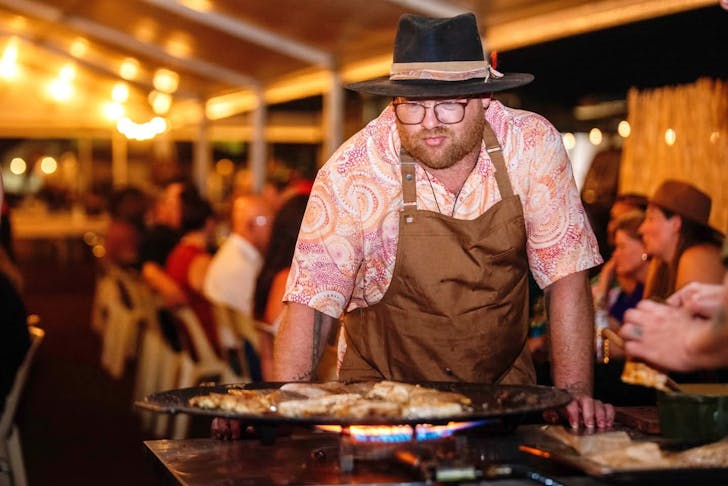 Image credit: Zach Green | Provided
Image credit: Zach Green | Provided
A proud Gunditjmara and Palawa man, Zach first stepped into the kitchen at 15, working as a kitchen hand in the ski mountains of Mt Buller alongside his mum. At the time, the kitchen not only offered a baptism of fire into the culinary industry, but also a refuge from bullying and a safe place where he could feel more himself. With room to explore his identity through his practice, Zach’s culture became embedded in the way cooks. Now, keeping his pantry, or kitchen garden, stocked with favourite native ingredients allows Zach to bring his heritage onto the plate everyday.
“The unreal thing at the moment is that I'm actually growing a lot of that stuff out in my backyard,” he tells me.
At the moment, that’s native lemongrass, which he describes as an earthier and heartier version of the lemongrass you’d find at your local grocer. Ground to a paste with garlic, native thyme and oregano, the blend is smeared over barramundi and baked up to retain the moisture of the fish, or cooked alfresco in a newly purchased Gozney. “I’m in my Matt Matheson era,” he jokes.
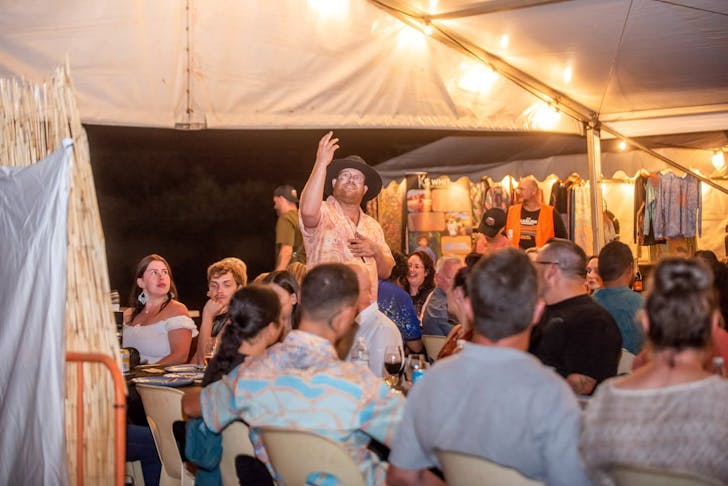 Image credit: Zach Green | Provided
Image credit: Zach Green | Provided
The kitchen garden not only allows Zach to experiment with native ingredients not always readily available, but also reflects his approach to using seasonal ingredients, much like his ancestors. With native ingredients, he tells me, it’s about following the seasons, taking only what you need from the land, and leaving the rest for next season.
“The late Anthony Bourdain, he used to talk about how in Italy, you would only pick the tomatoes at the ripest time,” he explains. “Now we can get tomatoes 365 days, so you're not actually eating the most ripe, you’re just eating tomatoes. I’m slowly integrating more bush food, more indigenous ingredients, into my household pantry, especially growing them at the moment.”
The latest venture in the garden is bush tomatoes. It’s a temperamental endeavour, as bush tomato only grows after a fire and rain, when all the weather elements perfectly align. Whole bush tomatoes are churned with paprika (Hoyt’s sweet smoked, always) and some Keen’s curry to make a three-ingredient spice blend that Zach reaches for time and time again in the kitchen, as a dry rub on meat or to season fresh seafood.
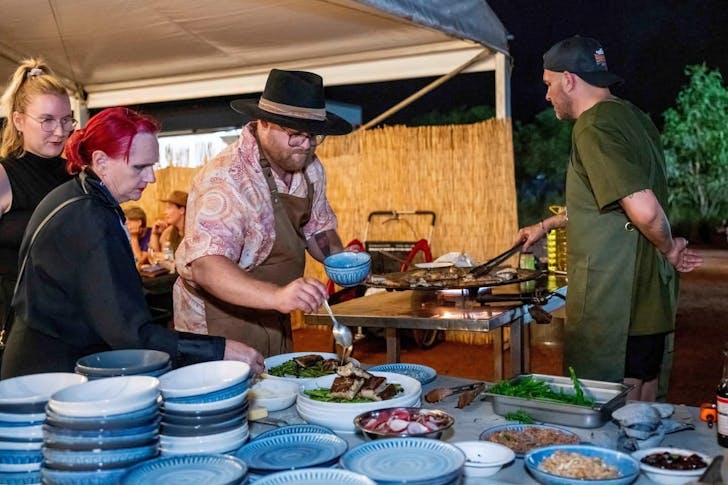 Image credit: Zach Green | Provided
Image credit: Zach Green | Provided
“For me it's just that richness of earth, it kind of transcends me back into central Australia, where it grows.”
And while Zach might be an indigenous chef, he’s still learning how to use native ingredients that aren’t familiar to him.
“A lot of people think being an indigenous chef, I should know all the indigenous ingredients, but I'm still learning myself. A lot of ingredients aren’t from my country, so I'm still learning from other different mobs where I can get these ingredients, or who can I ask to be able to harvest him a little bit, or pick them.”
Finger lime doesn’t grow where his mob’s from, he tells me, but he was introduced to it at an early point in his cooking career, sprinkled on oysters for a fresh citrus burst with the briney flesh.
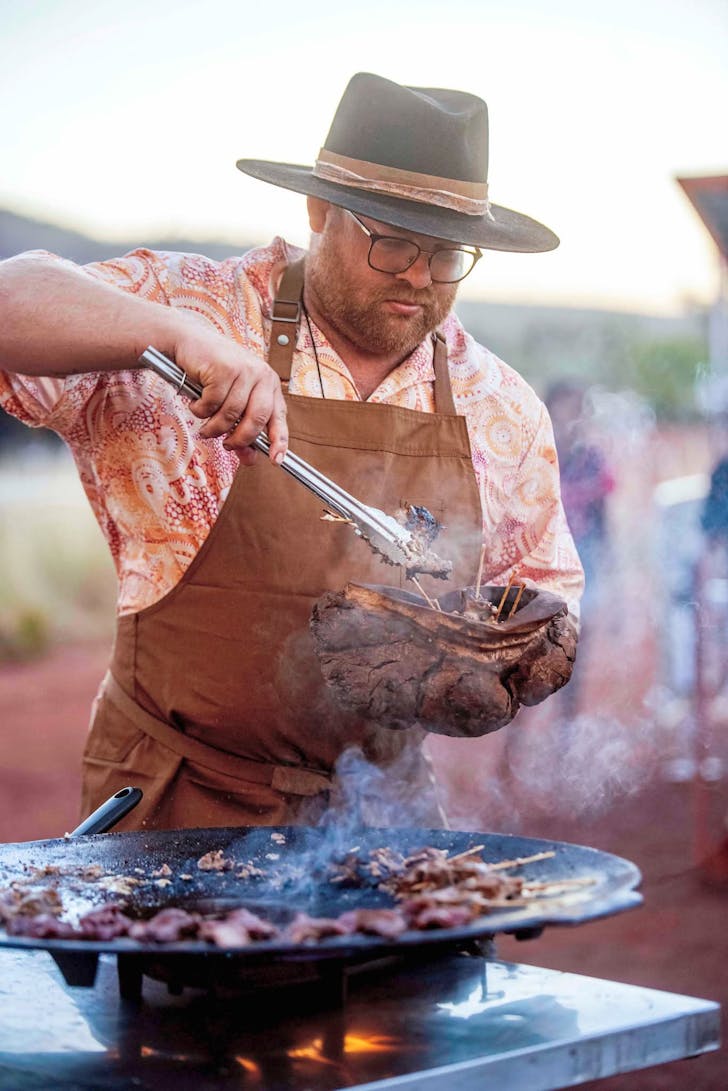 Image credit: Zach Green | Provided
Image credit: Zach Green | Provided
As for native ingredients found closer to home, Zach’s a fan of green ants, not just for their biting, lime-like flavour, but also the medicinal properties. Near home, the ants' nests aren’t hard to find, often forming on fruit trees that he’ll pass by on a walk with his wife.
Collecting the nest, Zach will turn his forage into green ant cheesecake. A classic butter-and-biscuit base, topped with a cream cheese filling with fifty or so ants stirred through, set in the fridge. If he’s feeling up to it, the dessert is topped with some homemade quandong coulis. It’s a dish he used to offer up at his Darwin restaurant, to the often pleasant surprise of diners.
“People were taken aback, they were like I’m not gonna eat green ants, and I’m like no try it. And then they would try it and they would go, oh my God, this is actually really awesome,” he tells me.
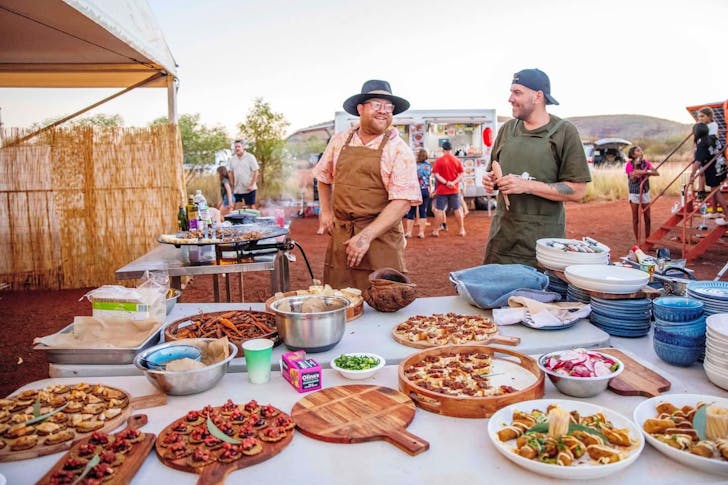 Image credit: Zach Green | Provided
Image credit: Zach Green | Provided
Back home, the family isn’t always as adventurous as his diners. With four boys to feed, ranging in age from eight to 17, and who aren’t afraid to be vocal critics of the food they’re being dished up, Zach needs some guaranteed crowd pleasers in his arsenal.
“I know that I'm gonna get honest feedback from them, no matter what. My kids have actually made me a better chef than any of my previous mentors have.”
Enter crocodile laksa, and a battered orange tin of Keen’s that Zach will reach for time and time again when opening his pantry. “I always say you're not a black fella, if you don't have Keen’s curry in your pantry,” he laughs. But the joke lands, the flavour packed powder having become synonymous with modern Indigenous cooking.
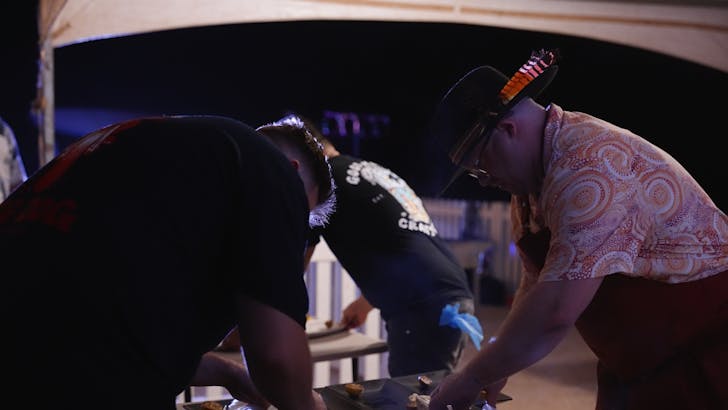 Image credit: Zach Green | Provided
Image credit: Zach Green | Provided
The scent of Keen’s, garlic and onion, endemic to many Australian households, is one you’ll often find wafting through Zach’s family home. It’s the base of his laksa broth, which gets finished with coconut cream and the flaky crocodile meat. And while the laksa has become family lore, the Keen’s comes with Zach from home kitchen to professional.
“People think, a restaurant scene and your home kitchen scene is totally different, but it's not, it's very similar, and you can still use the same recipes in the kitchen to the restaurant as well. I always say it's like sitting around a kitchen table and having dinner with your fam and just having a good old yarn.”
Main image credit: Zach Green | Supplied
